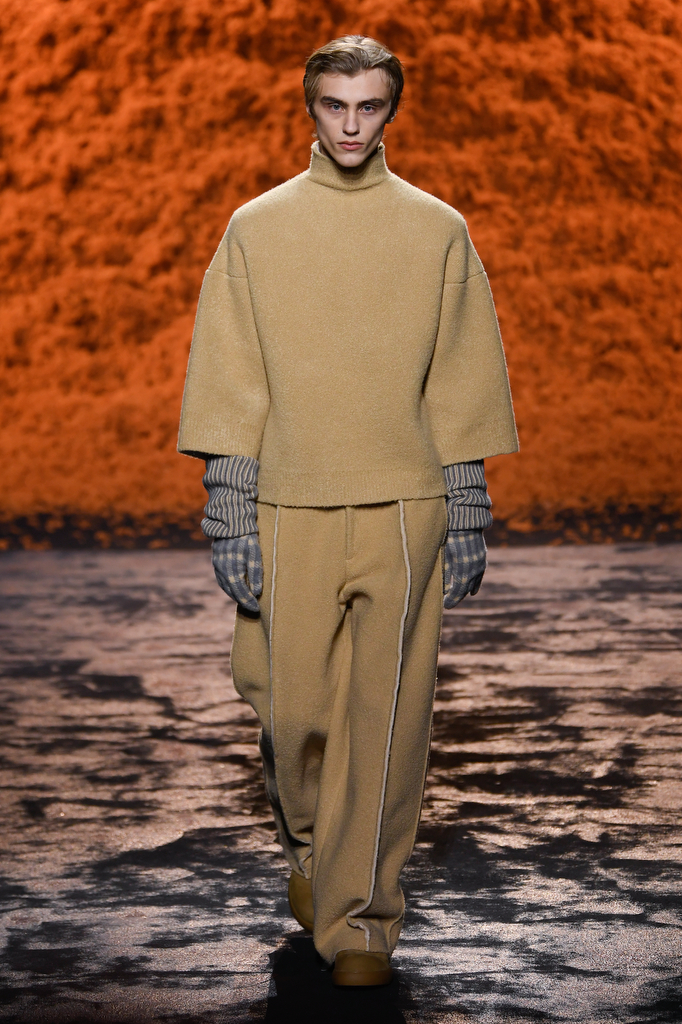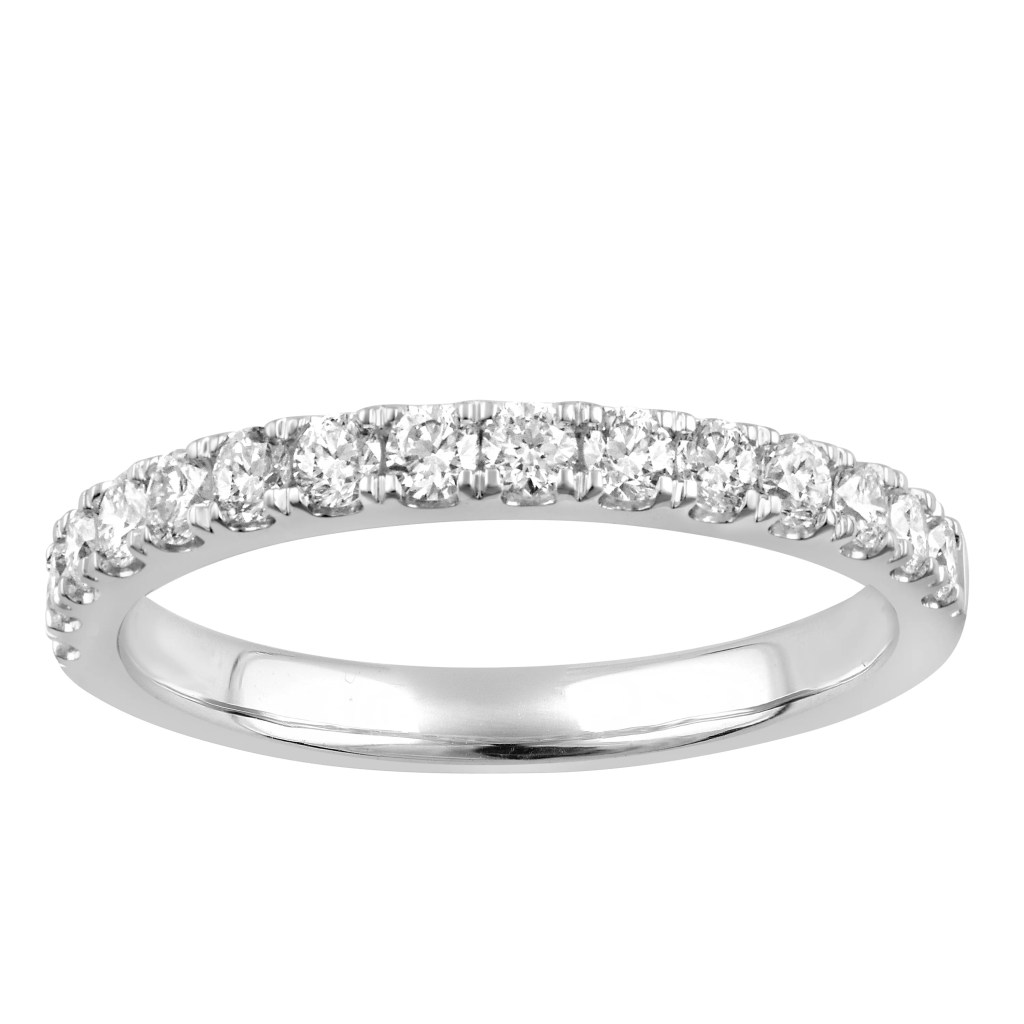For fall, Alessandro Sartori brought a corner of Oasi Zegna to Milan. Guests filed into the giant dark space at the former city fairgrounds where cashmere flakes in Zegna’s signature vicuna hue gently dropped from the ceiling to form a high pile in the center of the zigzagging catwalk, the sound of mountain wind blowing in the background, which was followed for the show by a soundtrack composed by British musician James Blake.
“It’s like our sala delle mischie,” or the room where the cashmere is blended at the house’s headquarters in Italy’s Trivero, explained Sartori, artistic director of the brand, speaking of the set.
There’s no denying the designer’s expertise with fabrics, and listening to Sartori always feels like taking a crash course in the treatment of textiles. This time was no different, as he continues to forge ahead with his extensive research and experimentation in fabrications, materials and dyes. The result was a beautiful collection that was an organic evolution of Sartori’s staples that felt fresh and innovative.
There were several introductions, such as his work on the side silhouette as pants showed a lateral stitch that helped keep the volume. The loden coat was revisited with a new construction that Sartori humorously called the sandwich, whereby three layers of cashmere were stitched together. In another example, a quilted coat was created by inserting a sonic welded duvet sheet between two layers of cashmere.
Layering was a keyword, without losing the feeling of ease, comfort and effortlessness, but in this collection volumes and shapes were a bit more generous and enveloping than in the past. The designs were neither entirely stiff nor completely loose, and Sartori put the accent on hybridizing what he believes are the brand’s four main categories — tops, bottoms, underpinnings and accessories — in an open system that can be layered and combined according to one’s personal styling. To this end, he gave more shape to ribbed and padded jumpers that were worn as outerwear, for example, such as a particular stunner — a knit in shaved cashmere.
He spoke of “a reshaping of matter and a re-mattering of shapes” and the lineup included a more outdoorsy, utilitarian and workwear edge. There were plenty of pockets, supersized or slanted on the new boxy jackets in Harris tweed or soft leather. Pockets were also lowered on the 80cm-long cashmere jackets, elongated for fall.
While Sartori advanced his mouthwatering color range — shown in monochromatic looks that included touches of soft dawn pink and violet blue in addition to winter whites, butter, foliage brown and green, charcoal and black — gingham was the only pattern. This was revisited in different versions, as intarsia on a romantic cropped blazer, in a macro weave that added texture or embroidered.
It was a menswear oasi.



